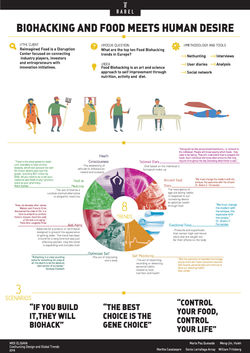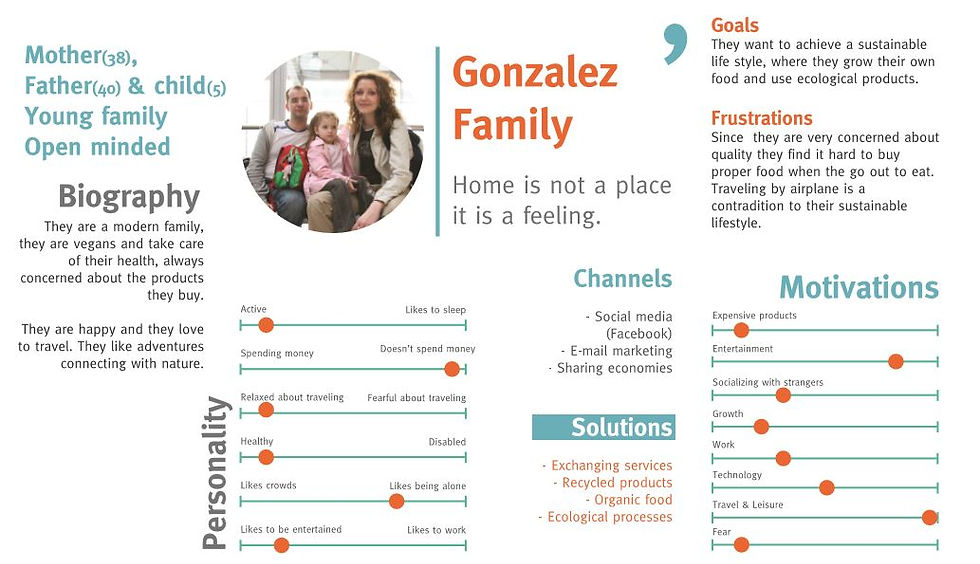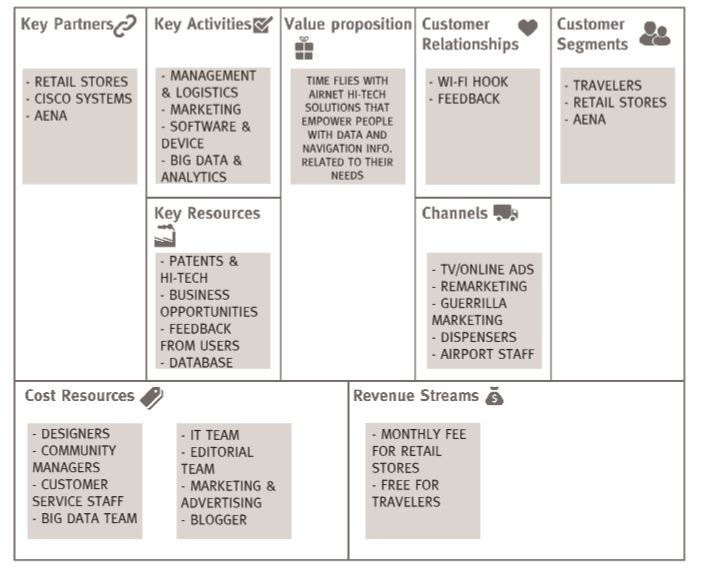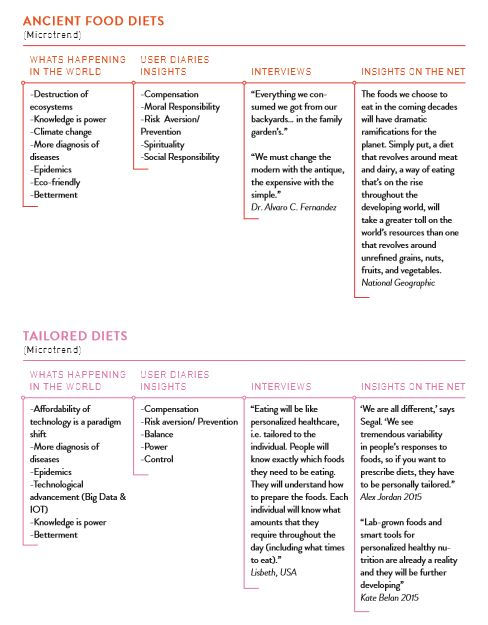
EXECUTIVE SUMMARY
On our collaborative project with CISCO and Media Lab we had the challenge of exploring the airport as a small smart city and to give innovative solutions for time management, queuing, waiting processes etc. for the passengers during their journeys.
We started by studying what different airports in the world are doing to innovateand the technologies they are using but, we also decided to dig deeper into understanding the psychology of queuing, innovative queuing solutions and other factors that we considered had to be understood. We discovered that most of the airports invest all the effort in entertainment for their passengers as well as new technologies such as beacons and biometrics. However, none of these services seem to fulfill the negative emotions that travelers go through in the security check or the waiting area.
Our research approach also included a combination of nethunting, interviews, surveys, cognitive maps and co-creation sessions. With our research we determined that there is a general customer journey for the whole airport experience. Even though some passengers have to go through the same stages and touch points in the process, the experience is never the same. Along their journeys, passengers hop into a “rollercoaster of emotions”, where they go from excitement all the way down to boredom.
Analyzing all the insights we got from these we choose the waiting area as our main point of interest and common solo travelers waiting in the airport between 2-4 hours as our final persona and we defined the four main topics that we needed to focus on: connectivity, technology, information and comfort.
Our POV-Point of View became: A solo traveler, waiting for 2.5 hrs at the airport, needs to stay connected and be informed, but the lack of customized services makes it hard for her to integrate into her surroundings in between the security and the gate.
Our Value Proposition is: Time flies with AirNET. Hi-tech solutions that connect and empower people with data and navigation info related to their needs.
The idea is to provide a service to use be used in the area after security and before the gate. It is composed of a device with an NFC enabler that will give the passenger amplified Wi-Fi, plus an application that will pop up in the mobile equipped with a layer information about their flight, a networking platform to connect with other passengers and the option to create a personalized journey inside the airport offering the option to visit restaurants and shops according to passenger’s preferences.
The service will offer augmented reality as an option to navigate around the airport and will suggest places and promos custom made for each. The service will be free. In order for it to be feasible it will be offered to the retail stores and facilities so they can advertise themselves on the platform. The device we offer will be reusable, meaning that it will be dispensed after security and given back at the gate entrance.
Our business model is key for the understanding our project. The service will be provided by the airport for the travelers. What makes our BM sustainable is that retail stores and facilities (our key partners) have the opportunity to increase their visits by advertising their products through our service. Our service, plus other services at the airport will be able to receive direct feedback from the travelers about their experience and quality of their products through our platform.


"Time flies"
When Reimagine Food tasked us with identifying the top ten food biohacking trends in Europe, our first question was what is “biohacking?” How does biohacking relate to “food?” With these questions, we started down a pivotal journey into understanding the world of biohacking, why people seek change and how technology is changing us. Etymologically deconstructed, “Bio,” is short for biology or the study of life and living organisms (wiki) and “hacking,” is the art of “finding unintended or overlooked uses for the laws and properties of a given situation and then applying them in new and inventive ways to solve a problem.” (Hacking art of exploitation).
Fast forward to 2016 and we see that biohacking has evolved to straddle three worlds: 1) Citizen scientists who engage in independent research with the Do-it-yourself Biology community (DIYBIO), 2) Grinders, people who physically modify their bodies with the use of cybernetic devices, and 3) Self-improvement seekers who use a combination of health, fitness and nutrition approaches to maximizing their biologic potential. For the purpose of this study and the market interest of our client, we are interested in this third category of self-improvement biohackers and how their practices relate to food and nutrition.
Our research approach included a combination of net/street hunting, social network analysis, user diary journals and interviews with experts. One of our first big discoveries is that biohacking is not new. Since the beginning of recorded history, humans have sought out an infinite number of ways to improve and enhance the human condition. Even something as simple as “cooking” has had a great impact on our biologic evolution. With each revolution in technology, there is a paradigm shift in society and this opens up new ways of looking at the human body. In the modern context, self-improvement seeking biohackers use a range of wearable devices, brain scanners and lab work to “quantify” their developments and refine their processes in real-time. This component of biohacking is a movement onto its own called the “Quantified-self.” Consequently, “food biohacking” can be understood in two ways--changing our bodies by changing what we eat or changing the properties of the food itself.
Based on our analysis, we observed eight significant food biohacking trends growing in Europe: Optimize Self, Health Consciousness, Tailored Diets, Self-Monitoring, Functional Food, Ancient Food Diets, Food as Medicine and Anti-aging. Employing insights from the user diaries, interviews, net-hunting research, and larger socio-economic influences, provides a foundation for thinking about future scenarios. Our analysis demonstrates that for each trend there are specific drivers and motivations in current human behavior. However, the most interesting discovery is that humans are in a constant search for betterment and not only are markets starting to respond, but individuals themselves, are proving to be an active players in the advancement of biohacking.
Looking to the future, we have developed three scenarios and opportunities based on our trends and data analysis. These are: “If you build it, they will biohack” (a social network for self-improvement biohackers), “The best choices is the gene choice” (a web/app platform that helps you navigate food choices based on your genetic profile), and “Control your food, control your life” (a customized home nutrition systems). Armed with these insights and the constantly evolving role of technology in human life, consumers and producers now stand at the edge of a new frontier, where biohacking with food is just the beginning.
 |  |
|---|---|
 |  |
















EXECUTIVE SUMMARY














"Biohacking food"

Authors







